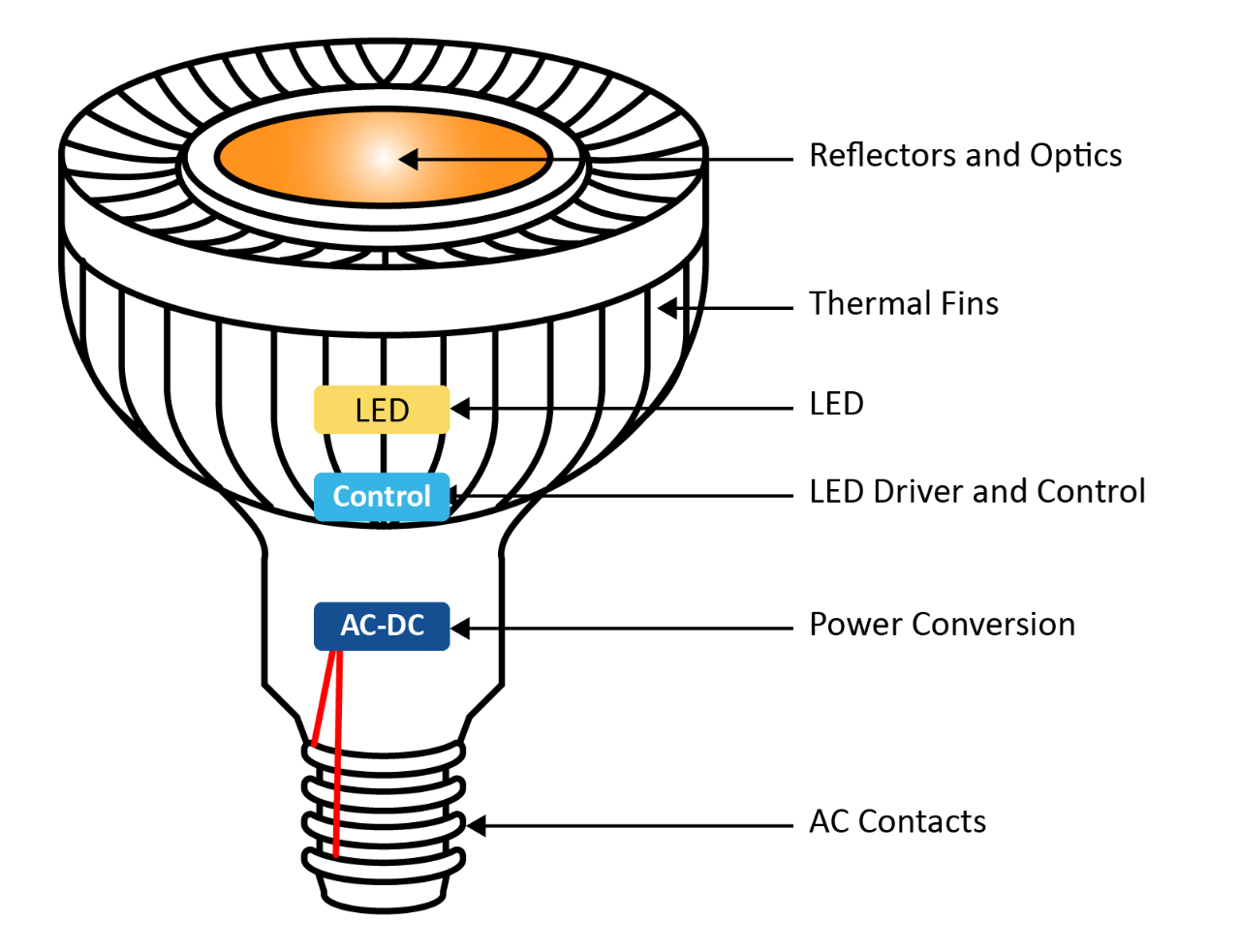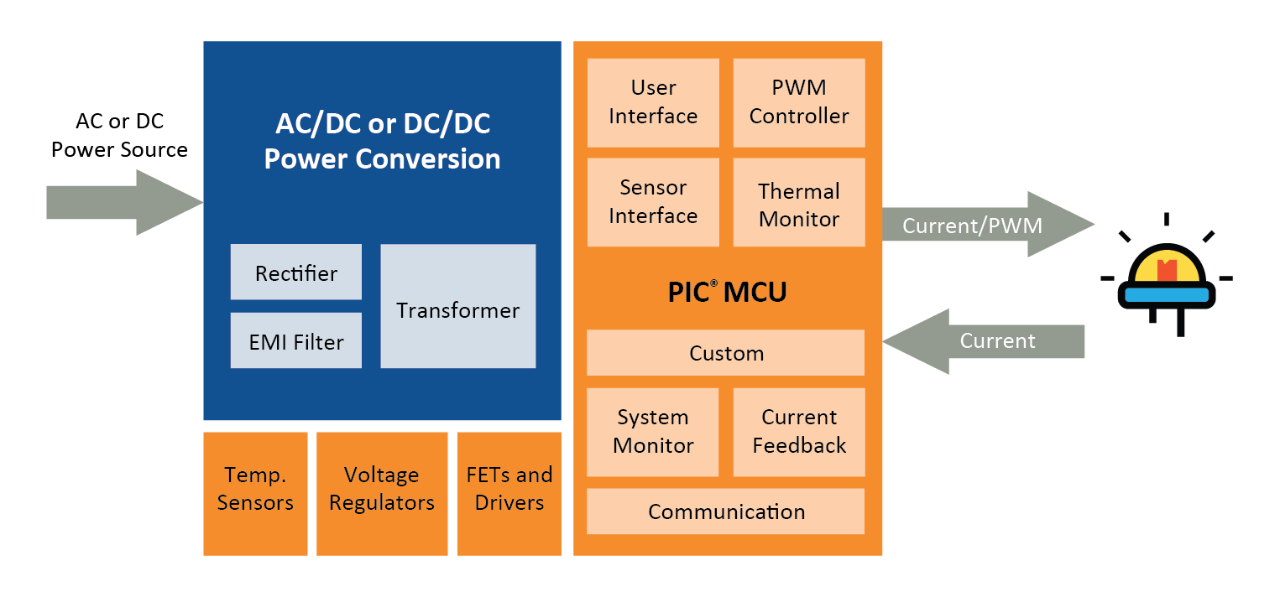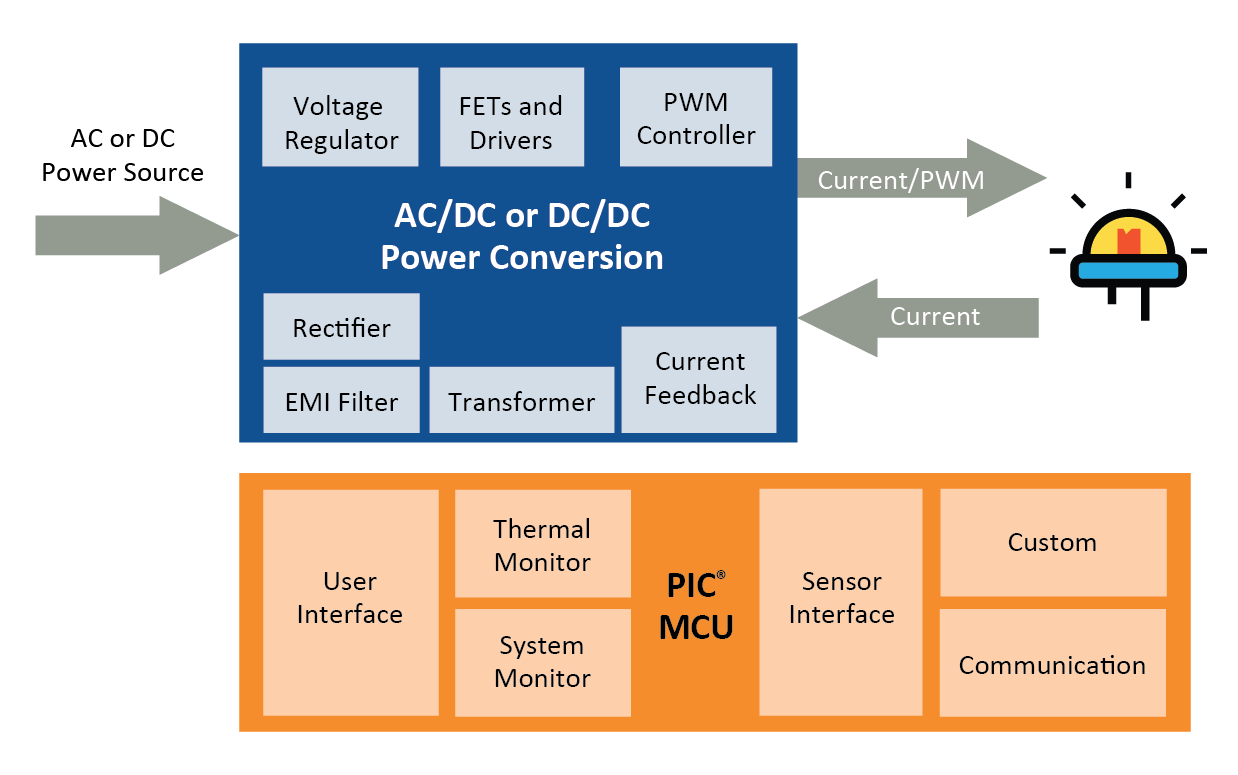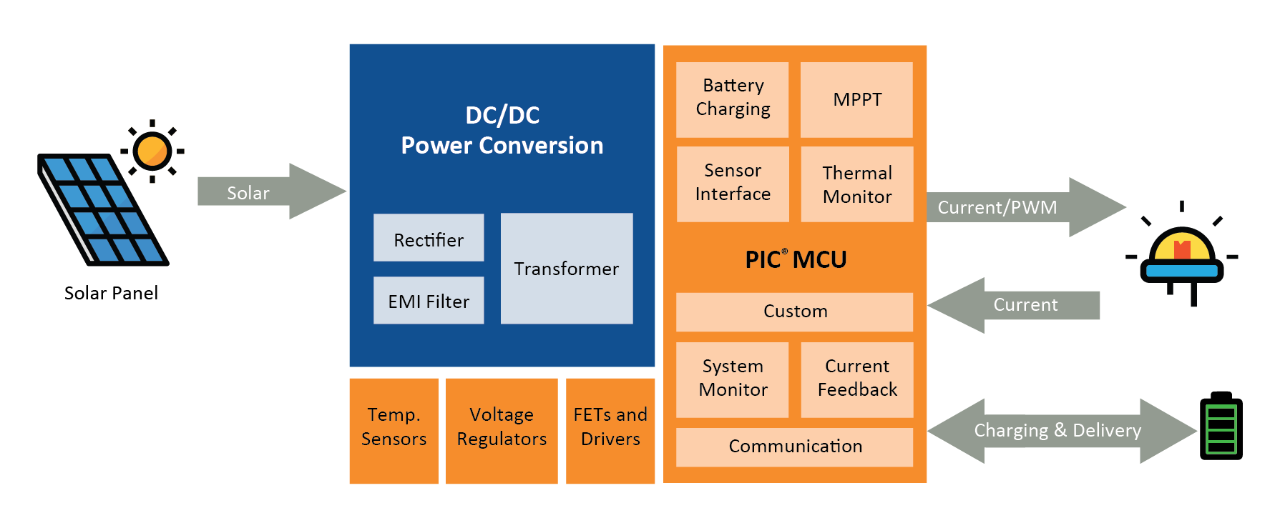At the forefront of the most efficient incandescent alternatives are LED and fluorescent technologies. Both have advantages and technical challenges and provide significantly improved efficacy (lumens/watt) over incandescent lighting. Additionally both technologies provide opportunities to add intelligence beyond simple incandescent light bulb replacement.

Advantages
- Best overall efficiency
- ~75% less energy than incandescent
- ~25% input energy = light
- More than 100 lumens/watt (efficacy)
- Long life: >50,000 hours
- No warm-up
- No radiated heat
- Good in indoor and outdoor applications
Disadvantages
- Near-term expense
- Requires electronic drive
- Requires thermal solution to remove conducted heat
Unlike an incandescent or fluorescent light source, an LED does not radiate heat. Rather, the heat is conducted via the back side of the LED semiconductor material. This creates a technical obstacle as excessive heat can deteriorate LED performance, function and overall lifetime. To properly remove the heat in a high-power LED application, you may need to utilize a thermal heat sink or active fan or actively reduce lumen output based on temperature.
Controlling an LED
Constant Current Method
- Light output maintained by constant current level
- Dimming control via varying current level
- Requires high-resolution current control

Modulated Current Method
- Fixed current drive chopped by PWM
- Dimming control via varying PWM duty cycle

LED drivers can be designed to offer dimming and RGBW color mixing capabilities by either providing a high-resolution PWM (or variants such as Variable Frequency Modulation) signal or varying the constant current.
Efficient Power Conversion
SMPS with PIC® Microcontroller and Analog Products
- Increased MCU integration
- Fully customizable
- Increased efficiency
- Power Factor Correction (PFC)
- Flexible topologies
- Simplified modifications via firmware updates
- Closed-loop control feedback
- High-performance PWM and current control variation
- Intelligent control capabilities

PIC Microcontroller Attach to Basic Power Supply
- Simplified design-in
- Customizable features
- Simplified modifications via firmware updates
- Intelligent control capabilities

Energy Harvesting and Battery Charging
- PIC MCU-controlled power conversion and battery storage
- Peak power tracking control, charging and power delivery
- Customizable MPPT and battery charging algorithms
- Support for various power supply topologies
- Intelligent control capabilities

The input supply voltage and the LED forward voltage characteristics determine the SMPS topology that is required. The SMPS topologies utilized to regulate the power within LED lighting applications are the same as those used within a power supply application. Each SMPS topology has its advantages and determining the proper topology is dependent upon the specific application requirements. Refer to the table below for topology guidelines.
Intelligent Control Capabilities
- 8-bit Microcontrollers
- 16-bit Microcontrollers/Digital Signal Controllers
- Hybrid PWM Controllers
- Electroluminescent Backlight Products
Similar Devices
Application Notes
Firmware
Beta code library available now
Digital Addressable Lighting Interface (DALI) is a standard lighting control protocol for large networked lighting systems. DALI provides bi-directional communications with uniquely addressed light sources. This allows for customized lighting schemes and the ability for the light source to relay information back to the controller (ie. light output level, color, energy usage, etc.).
- 'C' based firmware library
- Control Device (master) and Control Gear (slave) libraries
- Automated commissioning
- Firmware implementation on any 8-bit PIC® microcontroller
- PIC microcontroller requirements
- One 8-bit timer, one 16-bit timer
- EEPROM or Emulated EEPROM (self-write Flash)
- ~4KW Flash program memory footprint (final code size TBD)
- Compliance
- IEC 62386-101 (DALI general system requirements)
- IEC 62386-102 (DALI general system requirements – control gear)
- Future support for IEC 62386-2xx implementation (particular requirements for control gear; e.g. LED, fluorescent, etc.)
Downloads
